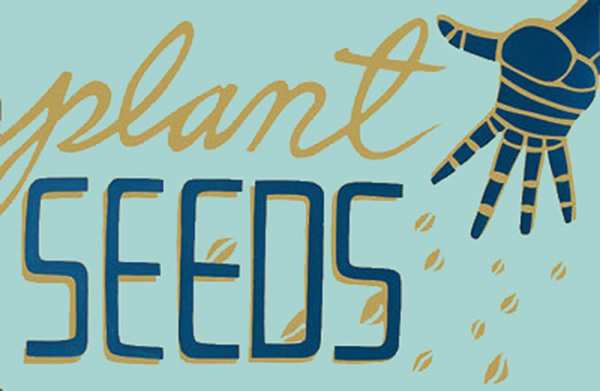
I just realized that this nice group interview Milwaukee artist Brandon Bauer, creater of the Random Artwork blog, did with a bunch of us in Justseeds never got reposted here. So here it is. And check out Brandon’s site, and the interview with images, HERE:
What is Justseeds?
Dylan: Justseeds is a Marxist-Leninist cadre of avant-garde artists who use fine art to build the dictatorship of the proletariat.
Nicolas: Justseeds is a motley crew of anarchists, punks, and rabble-rousers who oppose people who work in institutions.
Shaun: Justseeds would win in a snowball fight with the Beehive Collective because we hide rocks inside our snowballs and pretty much play dirty all around.
Talk about the history of Justseeds, how did it get started, how did you all get involved, how did it become the cooperative it is today?
Nicolas: Josh started it in the late 1990s. Three years ago, he invited his friends to turn it into a collective.
Shaun: I became familiar with Justseeds and most of the people involved through meeting them at the Allied Media Conference, which in it’s earlier incarnations was the Underground Publishing Conference. I met Josh there, and a lot of others, and the networks and projects were already blossoming. I was in college in Tennessee and didn’t know anyone else who was even interested in making this kind of work, and suddenly I found a cross-US growing peer group to share ideas and work with… eight or nine years and several collaborations later and I’m in a working cooperative with many of the same folks, plus some that I still haven’t met but can’t wait to meet.
Dylan: Weird connections across time and space. Met Josh and Erik at UPC. Favi came and stayed with me. Nicolas, also at UPC. I met Chuy and Melanie thorugh Favi. I stayed at Meredith’s house in Providence when Nicolas, Josh and I spoke there. I still am more of a fan of thinking of us as a collective, as opposed to a cooperative. The cooperative focuses on the sale of prints, which I find the least exciting aspect of Justseeds- although it raises money to do some super rad projects.
Colin: I learned about Justseeds and met a bunch of folks at the AMC/Underground Publishing Conference as well, and through participating in the Paper Politics and Stencil Pirates exhibitions that Josh was organizing. The cooperative seemed to develop organically where a lot of us began working together and helping out with different projects we were involved in.
Justseeds states that as part of its reason for being is to support social movements, what social movements do you support, in what capacity, and have you found these movements open to working with artists?
Dylan: In some ways, I think supporting may be an inadequate way of thinking of our role. In fact, Justseeds is a social movement that is also a part of various other social movements. As a collective of twenty-ish artists, we use our art in a variety of different contexts. I am active is certain movements, while so are other artists. There is often overlap, but not always. That is what is so exciting about this social investigatory project.
Nicolas: One of our efforts has been to align ourselves with the movement to counter the prison industrial complex. We created 100 portfolios of prints that addressed prison issues called Voices From Outside, and we donated over 40 of them to groups across the country. We also included a CD-R of copyright free graphics of all the images in the portfolio, plus the prison-related images from Reproduce and Revolt—a book that was co-edited by Favianna and Josh. To date, the portfolios have been used in a number of ways. Exhibitions have been staged to bring more attention to the movement, graphics have found their way onto flyers and periodicals, and some organizations who received the portfolio auctioned theirs off as a way of fund raising. Most importantly, to me at least, I think the portfolio reasserted to these groups the need to use art, graphics, and creative resistance in their work, and for us, it reasserted the need to work more directly within social movements.
Justseeds describes itself as a “Radical Artists’ Cooperative”- how do you see what you do as radical? Why is that definition important?
Josh: Only some of our material uses the term “radical.” Personally I’d rather not use it and question it’s usefulness. I think it is important that we are socially-engaged, and attempt to use culture to both express our individual opinions about the world as well as collectively define what we would like to change and steps for how to do that. I’m not sure that’s radical, or that we all even have a common definition of what “radical” means.
Roger: It’s difficult to find one word that fits into that three-word grouping that conveys the spirit of how we are as a group or as individuals. We’ve had some tongue-in-cheek suggestions like “concerned artist’s cooperative”, and the jokes just make the failure of “radical” as a descriptor all the more obvious. It’s nice and short, and works for now. It trips off the tongue in a way that “art cooperative pointing in a different direction” doesn’t. Perhaps “dissident” is the word we’re looking for, a perspective on the state of the world that eschews the lies we tell ourselves to stay comfortable.
Dylan: I think of radical as a double signifier, emerging from its usage as in 1: connected to the basic make-up of something, as well as in 2: favoring fundamental social change. This nuanced naming, similar to the complex meaning of Justseeds, points to the very dialectic nature of Justseeds as a collective. Mujeres Creando, the Bolivian anrcho-feminist collective argue that “there has never been a radical social movement, at least that which makes us happy, that has not also been creative.”
Your recent exhibition “Which Side Are You On?” at the University of Wisconsin-Milwaukee Union Art Gallery seems to be a huge step forward as a collaborative exhibition from the other exhibitions you have put together. For example, your collaborative exhibition at Space 1026 in Philly seemed to really be about the print-based work of Justseeds while incorporating installation elements, but this current exhibition really does seem to be about the collaborative conception and realization. How was this exhibition conceived, how was it organized, and how do you feel about the outcome?
Dylan: Working alongside and in dialogue. Sometimes successfully, sometimes ineffectively. We held conference calls, uploaded PDF’s to our intranet site and engaged in dialogue in a variety of ways.
Colin: We spent a lot of time doing preliminary work online and over the phone, which helped to come up with a theme and ideas for sculptural objects. After that the most effective visioning was done as a group face to face in the space the Saturday before the opening. I immensely enjoy these collaborative endeavors, and feel very at home among a bunch of folks running around it different directions and banging on things, maybe it is because I am used to this organized chaos growing up doing electrical work, where there are tons of folks using all kinds of power tools in tight spaces. The organized chaos of a Justseeds installation seems to parallel how I live my life as well.
Kevin: There has been a lot of 3-D installation activity in many artistic communities that we intersect with. Graffiti and street art moving into galleries has offered many of our contemporaries the opportunity to fabricate environments and atmospheres. It is a manner of contextualizing whatever work is on display.
In the exhibition “Which Side Are You On?” you brought the street and street art methods inside of the gallery, how do you feel this effects the work, and do you feel that it changes the relationship of the work to the audience as opposed to the work of the cooperative found directly on the street?
Josh: I think bringing the process of working on the street into the gallery can be interesting, but even in this show I think we depended too much on including the same work we would in the street in the exhibition. It made some sense because by building a highway in the gallery, we constructed a simulation of the street, but in the future I’d prefer to be more conscious about the graffiti and street art elements we include. The street and the gallery are different venues with different potential audiences. I think they need to each have their own unique visual strategies.
Roger: I spent some time on the last day of the install detourning our printed matter, cutting it up and pasting it onto the underpass pillars in different contexts. I was mostly trying to have a little fun with our materials, but it also seemed to stretch the meaning and purpose of those materials in different directions. That’s sort of a microcosmic version of what we were doing with the installation as a whole, using methods out of their contexts to convey different bodies of information, to tell different jokes and make different points. We were using both the official and unofficial visual languages of the street (signage versus graffiti/wheatpasting) to say what we wanted to say; I thought it made the work in the space fit together very well.
Dylan: Context, context, context. Shifting the context of the work, also shifted their signification. Operating inside a gallery space, even one at a public university, mediates the work in a way that often times runs against the normal modus operandi of Justseeds. In many ways, though, the work may also function successfully in a gallery space. I find the gallery much more exciting than the internet.
Is large scale installation a form you see the cooperative pursuing further, and if so how do you see this affecting the mission of the cooperative by working more directly within the sphere of institutional or gallery art rather than on the street or specifically with the movements you support?
Dylan: I envision us working in this style.
Josh: If the opportunities arise, it seems likely that at least a portion of the group will continue to do gallery/institutional installations. I don’t think they mutually exclusive with our individual print work, street work, or social movement work, and can be intertwined and simultaneously pursued. When ALL we are doing is installations in rarefied galleries that few people ever see, then come back and hit me over the head with it.
Nicolas: I hope that more installation opportunities come our way. They are great challenges and really solidify the bonds within the collective. I’d like to see us do one on the exterior of a building- a collective mural, or spend a few days all working on trains, or better yet, a border wall.
The Shepherd Express in Milwaukee recently ran a review of the exhibition under the title “Apathy’s Ugly Twin” that criticizes the exhibition for being too all over the place in regard to the issues you address, and in a backhanded way states that the exhibition is filled with “the noisy and all-too-earnest mass of rebellious statements targeted indiscriminately at ready-made causes”. . . How would you like to respond to that kind of criticism?
Roger: The world is crammed full of humans who all want to say something. If you tune out the sound of individual voices you just get a kind of roar. If those humans are angry the roar will be louder and more completely inchoate (I presume). That’s the sound of the future. If you’re uncomfortable with the sound of seven billion screaming bundles of righteousness telling you their opinion with voice, knife, gun, and art installation, you might consider a relocation to a more peaceful and less humanized part of the solar system. “Ready-made causes” makes it sound as if we’re performing lite dramas on the Holodeck. Shit’s all fucked up, you know? We’ve got something to say about it, just like everybody else. I don’t think we were all over the place with that installation. After all, like the title says, it’s about trying to figure out where you stand.
Nicolas: That review was basically an attack and it was grade-school journalism. Our show at the Union Art Gallery had the largest turn out for an opening in the history of the gallery so her views were counter to how most people felt about it. Plus, the point of activist art is to take a stand. And the point of the installation was to experiment within a gallery space and work collectively on a project for six days. The best way to understand Justseeds is to look at the entire body of work that we have done and then spend time looking at the individual artists and the other projects that they have been involved with. Their is no simple way of describing what we do or who we are.
Who are your influences—artistic, activist, or otherwise?
Dylan: Frantz Fanon and Howard Adams and Carlos Cortéz Koyokuikatl!!!
Nicolas: The simplest answer is to look at the Celebrate People’s History poster project.
What does the cooperative have planned for the future?
Dylan: We are beginning to put together a Justseeds’ journal.
Josh: We are working on a 2009 print portfolio loosely organized around the themes of resource extraction, climate change, environmental justice and class struggle. We are working on a group book project with Microcosm Publishers which will illustrate and highlight important social justice fighters from the Americas. We have a number of smaller scale exhibitions of our prints in the works, we are putting together our first printed sales catalog of our work, and as individuals most of us have dozens of projects in the works.
Nicolas: In 2009, I imagine their will be a steady output of new prints on the site, a very active blog, a new portfolio project, group shows, a journal, workshops, talks, and an assortment of new roads to follow. The nice thing about working with twenty-plus people is that there will be no shortage of ideas or opportunities.
Are there any upcoming projects by any of the individual member of the cooperative you would like to talk about?
Dylan: I am presently engaged heavily in writing and organizing projects. Primarily, I am working on a book about Indigenous anti-colonialism in Chicana/o art. I recently curated an exhibition on visual resistance in Oaxaca (’In the Name of the Blood Shed‘). I am hoping to put together a catalogue for that show. I am also completing a couple of book chapters on Indigenous anti-colonial art and an article on sneakers as radical discourse (all forthcoming in the next year). This summer, I am participating with a bunch of other Native art historians on Vision Project at the Institute for American Indian Arts, while with Favianna I’ve been invited to be a mentor artist next summer at Emerging Indigenous Voices in Hawai’i. Lot’s of other shit in the works, but still fomenting.
Josh: I’m working on laying out the exhibition catalog/book that goes along with the exhibition Signs of Change: Social Movement Cultures 1960s to Now which I curated with Dara Greenwald. The show has hung in NYC, Pittsburgh, Troy, NY and we hope the book will bring this giant collection of political movement posters, photographs, films, audio and ephemera to an even broader audience. Signs of Change the book should be out on AK Press in the Fall of 2010.





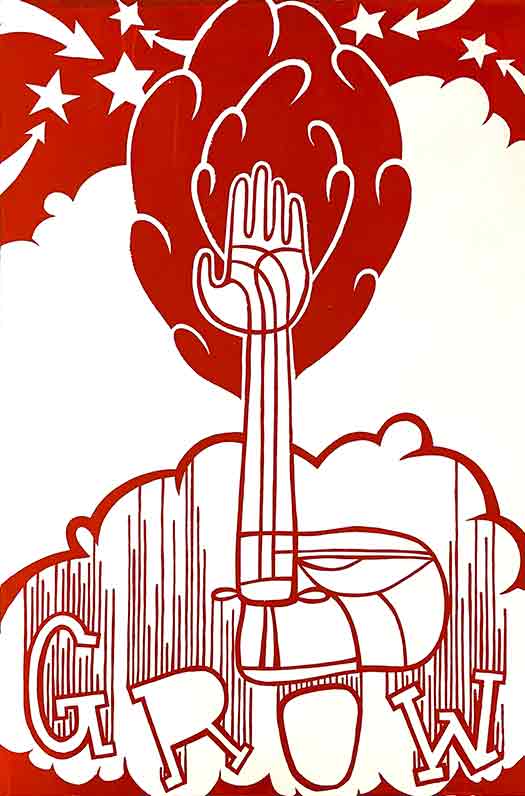
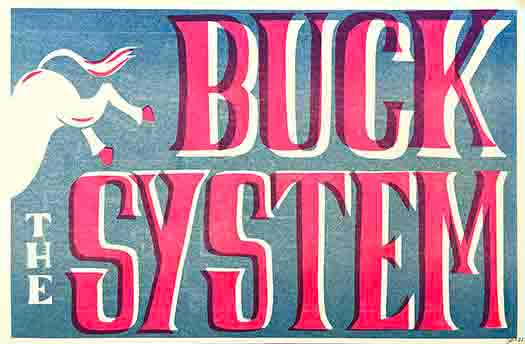
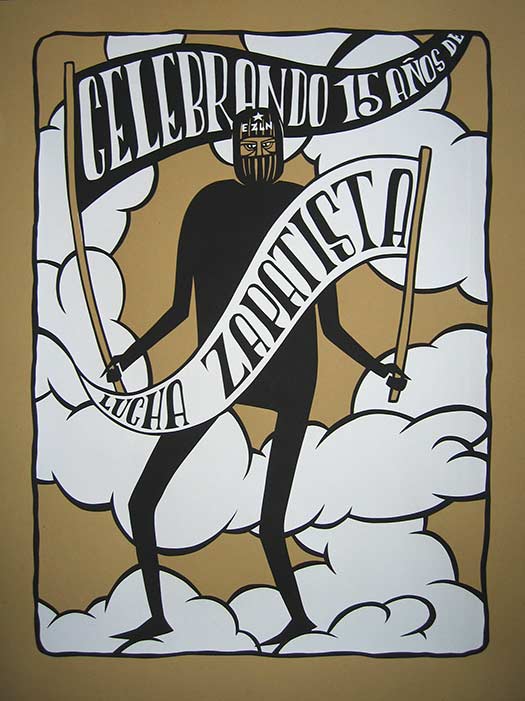
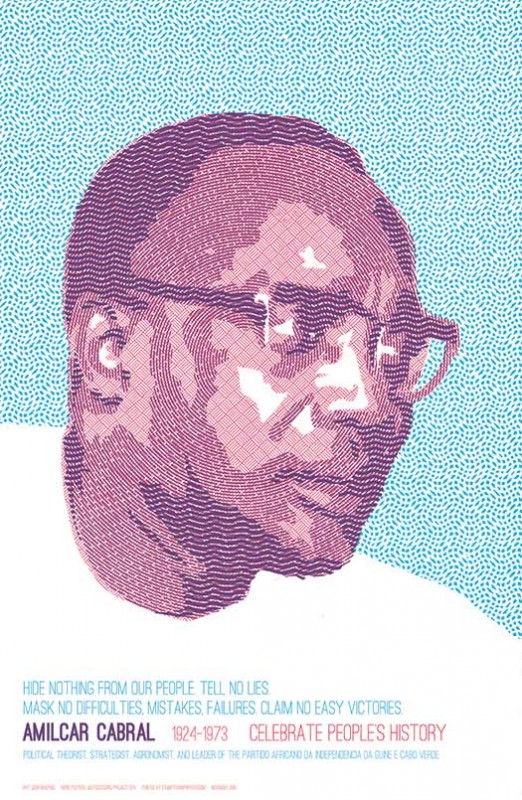
In case you can’t tell, I was joking about that dictatorship of the proletariat nonsense. Hopefully that was clear!! Justseeds is definitely not Marxist-Leninist in orientation!
Was I kidding about the snowball fight? I don’t remember… Dylan?